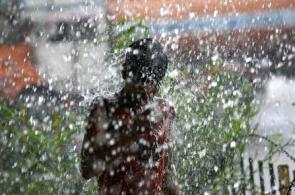 | « Back to article | Print this article |
India expects total monsoon rainfall to be average in 2013, a minister said on Friday, strengthening prospects for one of the world's biggest grains producers to avoid widespread drought for a fourth straight year. India's first official forecast confirms a call by global experts last week, and points to bumper grain supplies that would swell huge current stockpiles and hold down world food prices.
India's first official forecast confirms a call by global experts last week, and points to bumper grain supplies that would swell huge current stockpiles and hold down world food prices.
"I've very good news for farmers as well as others, the monsoon is likely to be normal this year," Earth Sciences Minister S. Jaipal Reddy told a news conference in the Indian capital.
Monsoon rains are vital for the 55 percent of the country's farmland that lacks irrigation facilities, and can make the difference between India being an exporter or importer of staples such as rice and sugar.
Rainfall is expected to be 98 percent of the long-term average during the June to September season, Reddy said. Rains between 96 percent and 104 percent of a 50-year average of 89 cm for the entire season are considered normal, or average.
The last time there was a drought with rainfall below this range was in 2009 and prior to that, in 2004.
Southern states already parched by their worst drought in four decades should see some relief, but their exact situation will be clear in June, India's weather office head L.S. Rathore added, easing fears their rice and sugar cane harvests could be hurt again.
The Indian Meteorological Department (IMD) will forecast the probable arrival date for the monsoon on May 15, Rathore added. Its next forecast for monsoon
